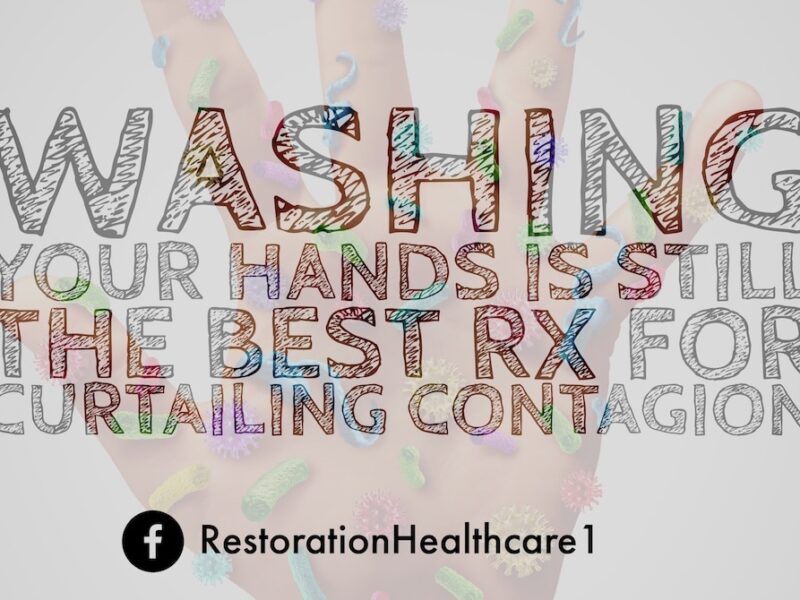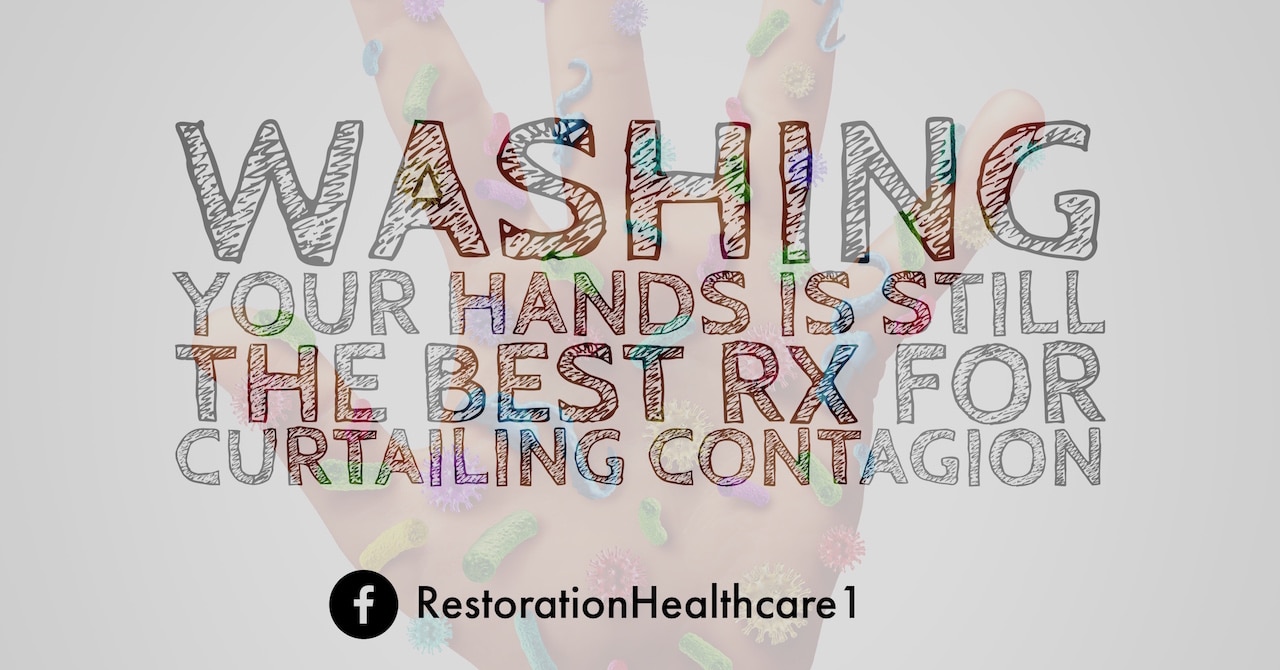Handwashing: Top Rx to Curb Contagion

When your doctor or health practitioner suggests meticulous hand washing as a primary means of preventing illness and disease, it sounds like a no-brainer — something along the lines of your dentist telling you that frequent brushing will prevent tooth decay.
No doubt about it. When it comes to curtailing colds, eradicating drug-resistant infections and dispelling disease, warm soap and water remains the best Rx. Hands down.
In fact, the Centers for Disease Control (CDC) suggest a thorough hand washing with soap and warm water is the most efficient means of reducing the number of germs on the hands. The CDC says that if soap and water aren’t readily available, an alcohol-based sanitizer (containing at least 60 percent alcohol) is the next best measure.
When and how often
When and how often should you wash your hands? According to the Mayo Clinic, you should always wash your hands before preparing food — especially raw meat, fish or poultry. Other times include during cold and flu season, anytime you visit a health care facility, and prior to administering first aid, dispensing medicine or caring for a sick or injured person.
You should also wash your hands after:
- Taking out the garbage, handling household or garden chemicals, or soiled cleaning cloths or mops
- Visiting the restroom or changing a diaper
- Touching an animal or pet toys, leashes or picking up waste
- Coughing or sneezing into your hands or blowing your nose
- Shaking hands with others (you might want to adapt a “fist pump” as an alternative)
- In addition, wash your hands whenever they feel or look dirty.
Timing is everything!
The CDC says the most effective way of washing your hands is to not rush the process. The agency claims most people complete this task in well under a half minute, and it offers a simple checklist for anyone truly interested in stopping the spread of germs.
The CDC also says you should wet your hands with clean running water — either cold or warm — and then apply soap. Lather up your hands, the back of your hands, between the fingers and under your nails. In fact, health experts suggest you continue scrubbing your hands for at least 15 to 20 seconds. Most folks spend a minimum six seconds performing this task, which the CDC says is insufficient.
And you don’t need to bring a timer into the restroom with you. Just hum the “Happy Birthday” song twice — from beginning to end. Then rinse thoroughly under clean running water, and dry your hands, preferably using a paper towel. Hang on to that used paper towel in order to open the restroom door for further protection against the bacteria found on the door handle.
These are all sound, practical tips, but not all health officials agree that a thorough removal of bacteria from the hands is necessarily preferred to ensure disease prevention. Microbial ecologists from the University of Oregon recently suggested that such a “scorched earth” approach of frequent hand scrubbing could actually be detrimental, destroying beneficial skin bacteria and leaving the door open for the spread or transmission of disease.
Be wary of antibacterial claims
This holds especially true when it comes to the recent popularity of antibacterial soap, according to such agencies as the government’s Food and Drug Administration. The FDA says there is no evidence that antibacterial soaps are any better than humble soap and water in battling bacteria on the hands.
In fact, the Oregon ecologists claim antibacterial soap actually promotes drug-resistant bacteria, linking the use of such soaps to allergies, thyroid problems and other ailments in young children. In addition, compounds such as triclosan have also been found to aggravate the growth of liver and kidney tumors, and interfere with fetal development in pregnant women.
And when it comes to cleaning up in public restrooms, these same Oregon researchers dispel the notion that using an air dryer is better than using a paper towel. Truth is, say these scientists, those wall-mounted heated air blowers are better at spreading germs than curtailing them.
In a research document, the ecologists say most public restrooms have replaced paper or fabric roll dispensers with the traditional warm-air dryers or jet dryers. Problems arise when these warm air dryers blow bacteria inside the dryer to the hands, or circulate bacteria within the closed space.
In addition, rubbing the hands under hot air for an extended period of time releases bacteria found in deeper layers of the skin.
Another fallacy, the report claims, is that the hot air dispensed by these air dryers is not nearly heated enough to kill bacteria. And in the case of the newer jet air dryers — which dispense high-speed, cooler air to evaporate water on the hands — there are other problems. One study shows the jet dryers dispersed viral material up to 10 feet from the device, spraying 1,300 more material into the area than paper towels.
In this respect, the CDC and the World Health Organization (WHO) both agree with the findings of the Oregon scientists, advising people to use paper towels to dry their hands. Both agencies claim disposable towels remove bacteria on the surface of the hands and reduce the contamination produced by air dryers and jet dryers.
Cloth vs paper towels
Finally, we come to cloth towels — found mostly in homes — and listed at the top when it comes to contamination. In fact, a recent University of Arizona study reveals that bath towels are most likely the most germ-infested item in the home, with 89 percent of kitchen towels and more than a quarter of bath towels riddled with bacteria associated with diarrhea and food poisoning.
The solution, of course, is to frequently toss such towels in the washing machine at a hot setting.
As is true in most situations, moderation in all things is often the best medicine. Avoid scrubbing your hands to the point where it dries out or irritates the skin. That’s just an open invitation for harmful bacteria to enter your body.


